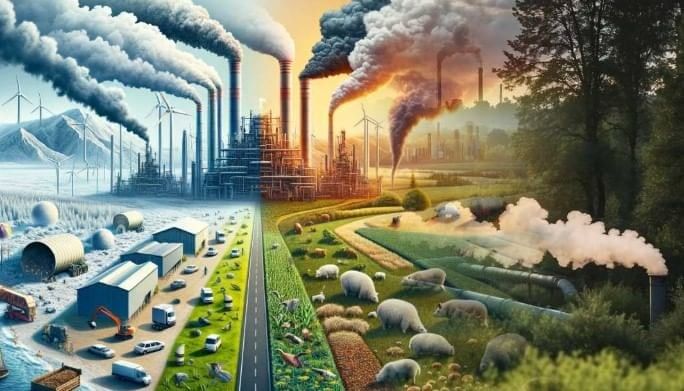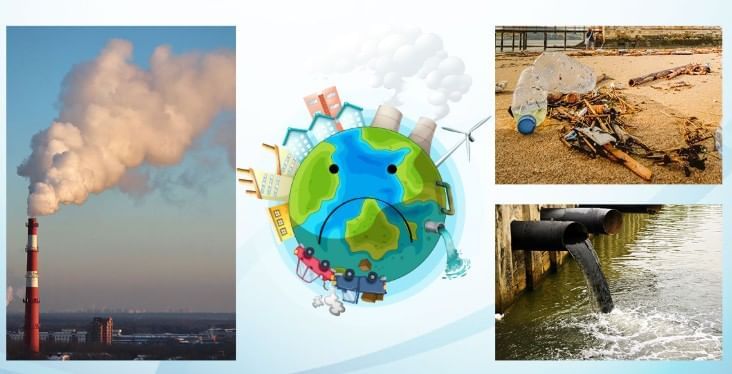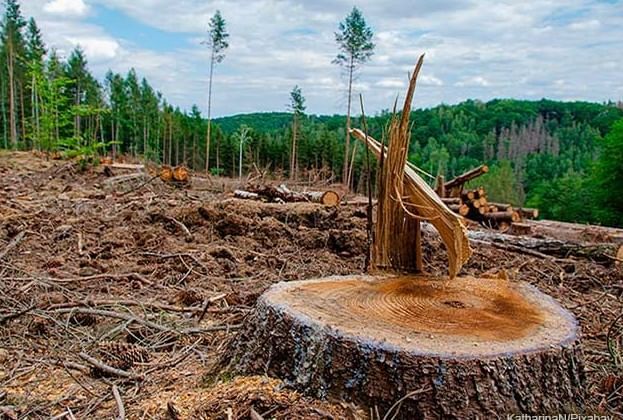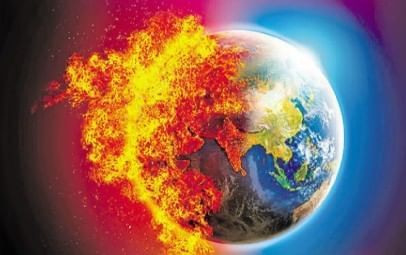Human Impact on Environment | General Knowledge for Young Learners - Class 1 PDF Download
| Table of contents |

|
| Introduction |

|
| Pollution |

|
| Deforestation |

|
| Global Warming |

|
| Steps to Reduce Human Impact |

|
Introduction
Human activities have changed the environment in many ways. While some changes are helpful, many have harmful effects on the air we breathe, the water we drink, the soil we grow crops in, and the climate we live in. Understanding these impacts helps us make better choices for the future.
Pollution
Pollution means making the environment dirty or harmful by adding unwanted substances. It can harm plants, animals, and humans.

Types of Pollution
Air Pollution:
- Causes: Smoke from vehicles, factories, burning of coal and wood, stubble burning by farmers, and forest fires.
- Effects: Respiratory problems like asthma, reduced visibility (smog), acid rain, and damage to crops.
- Example: Delhi and Beijing often face severe smog during winter.
Water Pollution:
- Causes: Dumping sewage, industrial waste, chemicals, and plastics into water bodies.
- Effects: Death of fish and aquatic animals, spread of water-borne diseases like cholera, unsafe drinking water.
- Example: The Ganga Action Plan was started to clean the Ganga River.
Soil Pollution:
- Causes: Excessive use of chemical fertilizers and pesticides, improper disposal of industrial waste, plastic waste dumped on land.
- Effects: Loss of soil fertility, decrease in crop production, contamination of food.
Noise Pollution:
- Causes: Loudspeakers, traffic, airplanes, construction work, bursting firecrackers.
- Effects: Hearing loss, sleep disturbance, stress, disturbance to animals (for example, whales are affected by ship noise).
Did You Know?
Scientists estimate that around 8 million tonnes of plastic end up in the oceans every year – enough to circle the Earth four times!
Deforestation
Deforestation is cutting down or clearing large areas of forests.

Causes of Deforestation
- Growing more crops and keeping animals (agriculture).
- Building houses, roads, cities (urbanization).
- Cutting trees for timber, furniture, and paper.
- Mining and building dams.
Effects of Deforestation
- Loss of Habitat: Animals like tigers, orangutans, and elephants lose their homes.
- Climate Change: More carbon dioxide remains in the air, increasing global warming.
- Soil Erosion: Without trees, soil gets washed away by rain.
- Less Rainfall: Forests help bring rain; cutting them reduces rainfall.
- Extinction of Species: Many plants and animals disappear forever.
Did You Know?
About 10 million hectares of forests (roughly the size of South Korea) are cut down every year!
Global Warming
Global warming is the rise in Earth’s average temperature because heat gets trapped by greenhouse gases.
Greenhouse Gases: Carbon dioxide (CO₂), methane (CH₄), nitrous oxide (N₂O), and water vapour act like a blanket around the Earth and trap heat.

Causes of Global Warming
- Burning fossil fuels for electricity, transportation, and industry.
- Cutting forests (reduces natural carbon absorbers).
- Emissions from industries, vehicles, and cattle farming (methane gas).
Effects of Global Warming
- Melting Glaciers: Leads to rising sea levels, flooding coastal cities.
- Extreme Weather: More cyclones, droughts, heat waves, and floods.
- Loss of Biodiversity: Species like polar bears, penguins, and corals are threatened.
- Health Problems: Heat strokes, spread of diseases like malaria and dengue to new areas.
- Impact on Food: Unpredictable rainfall reduces crop production.
Did You Know?
2023 was officially one of the hottest years ever recorded, with temperatures about 1.2°C higher than pre-industrial times.
Steps to Reduce Human Impact
Individual Actions
- Plant trees and join afforestation programs.
- Reduce plastic use – carry cloth bags, avoid single-use plastic.
- Save electricity – switch off lights and fans when not needed.
- Walk, cycle, use public transport, or carpool to reduce air pollution.
- Do not waste water – fix leaking taps, use buckets instead of showers.
Government & Global Actions
- Enforcing stricter pollution control laws.
- Promoting renewable energy sources like solar, wind, and hydropower.
- International agreements like the Paris Agreement to fight climate change.
- Wildlife protection programs like Project Tiger and UN REDD+ Program (Reducing Emissions from Deforestation and Forest Degradation).
|
64 videos|153 docs|40 tests
|
FAQs on Human Impact on Environment - General Knowledge for Young Learners - Class 1
| 1. What are the main causes of pollution and how does it affect the environment? |  |
| 2. How does deforestation contribute to global warming? |  |
| 3. What are some effective steps individuals can take to reduce their impact on the environment? |  |
| 4. What are the long-term effects of global warming on the planet? |  |
| 5. Why is it important to address human impact on the environment? |  |




















